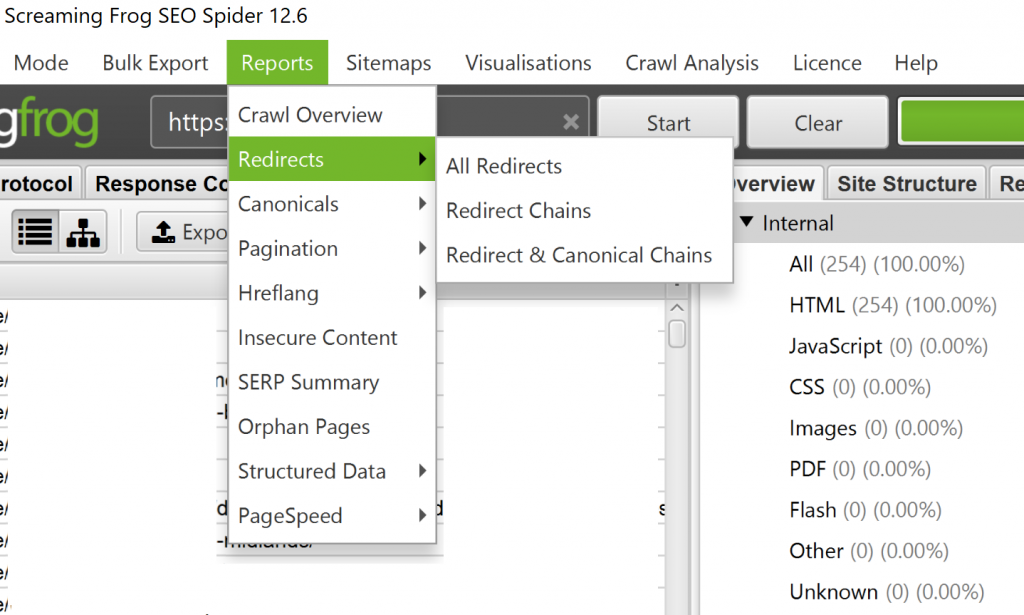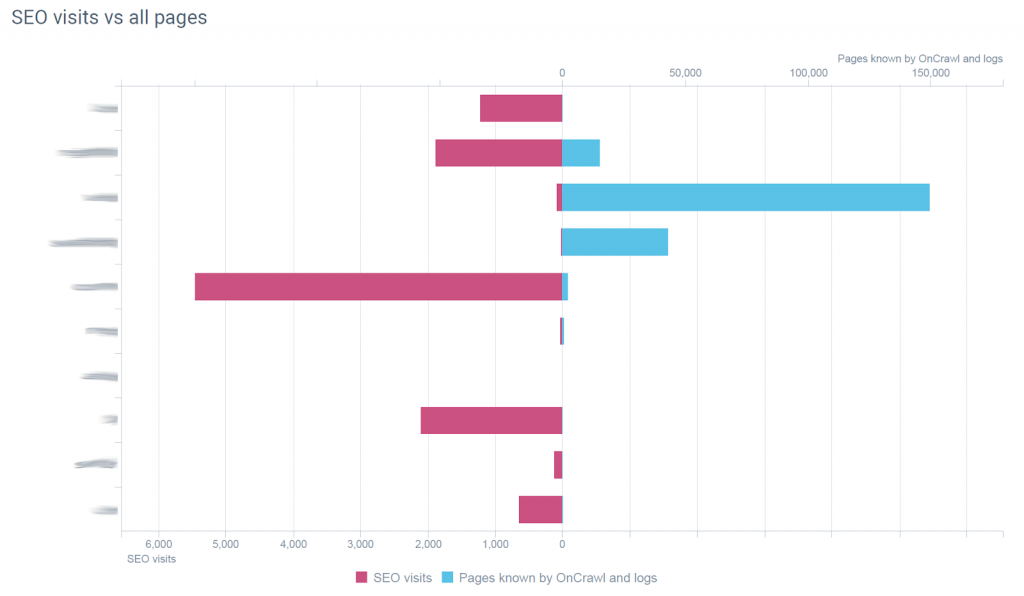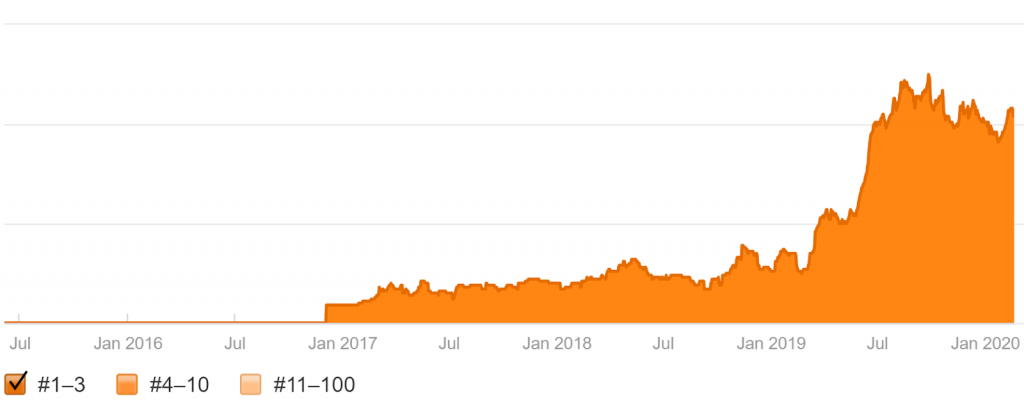The aim of this case study is to show how a simple SEO audit is a good starting point for achieving success for clients and SEO consultants.
What an SEO audit usually is (and what it should be)
When it comes to website management, there are thousands of potential elements (technical and content, both on and off site) that can be improved.
SEO audits diagnose how a website performs, analyse technical, content or UX elements, explore the competitive landscape, provide keyword analysis, and define priorities. An action plan is compiled, with recommendations to help the business to achieve its goals.
Without an audit, it is virtually impossible to uncover what could be affecting a site.
Depending on the complexity of the project, an SEO audit may result in dozens or hundreds of changes, which can be overwhelming. A client and their team may spend days studying the audit, and months implementing.
This is something that I’ve been guilty of: providing too much information and recommendations as it is what clients expect. But this is actually not what they need. A simple and easy to implement plan, with value oriented action points, can be more successful in terms of ease of execution and outcomes.
Goals of an SEO audit
Whilst SEO audits differ in terms of recommendations, they should aim to improve the quality of a website, and achieve the results the business is after.
“Uncover most of the issues and provide all the solutions.” is what most people assume an SEO audit should do.
I’m going to challenge this assumption, and instead recommend providing timely and vital implementations with an easy-to-recognise business value. A long, detailed list of issues can overwhelm clients and result in the opposite outcome than intended.
Here are the underrated goals that I recommend focusing on:
Achieve the client’s business goals.
As this is the reason for the SEO audit, your work should focus on this direction. Think about easy-to-recognise values and KPIs.
For example fixing an internal linking problem that unlocks the crawling of a number of pages, resulting in an increase in both visibility and sales generated.
Prioritize the recommendations.
Prioritise elements that can provide a real outcome, based on business value.
For example, if you notice an internal linking problem with mixed http and https with www and non-www elements, prioritise the consolidation of the website protocol and domain, i.e.: SSL with or without www.
Implementation.
Every organisation is different. Therefore, when asking a client to make a change, ensure it is something that can be implemented. If a change is too expensive to implement, the client may not do it or might be unable to see the value of it.
For example, recommending a client quickly replace old stock images from a five-year-old blog with professional photos is unlikely to be undertaken, even if it improves traffic and branding.
Trust.
As a business consultant, you need to earn the client’s trust. Your recommendations should produce an outcome they consider valuable, and you want them to be implemented because they trust you. This means sometimes waiting for the right moment to push for larger changes.
For example, showing the client the small wins and how your implementations influenced conversion rate, visibility, and or the number of pages crawled, and they will be more likely to approve larger changes.
Relationships.
It is imperative to develop long term relationships with the stakeholders and work well with all involved in the project as it will aid the achievement of results.
For example, when you need a sensitive technical change, rather than strictly outlining the process for the development team, explain why it requires resolving and the benefits. Then ask them how they think it is best resolved.
[Case Study] Handling multiple site audits
When should an audit be performed?
A website is continually changing and therefore requires an SEO audit at different stages of its life:
- Newly created websites should be assessed for optimisation and best performance
- When commencing a new project, to diagnose outstanding issues
- A few times per year, to ensure the site is in good health
- During a redesign or a website migration, to make sure all changes are correctly implemented
- When a problem arises, to diagnose where the issue resides
- When a business or website is sold, to analyse the asset
Who is involved in a SEO audit
In a perfect world the SEO consultant (or agency) sends the results of the audit to the client who implements all recommendations, so that the site generates new business. But this is very unlikely to happen.
Marketing, Operation and IT managers, developers, content creators, analysts, UX designers, CRO consultants may all be involved. Or none of them, if the business is too small.
Your role is to understand your client and ensure they can implement your recommendations, with the resources they have, to achieve value.
As already mentioned it’s essential to onboard all involved stakeholders to ensure that everybody is working towards the same goal.
A case study to show the result
Below is a case study to illustrate this point.
This was a business with a 3-year-old website with no previous SEO input, but a very supportive team.
The client wanted to:
- Improve brand awareness against competitors
- Increase organic conversions
Superficially the website looked successful. However, on deeper investigation, it only ranked for a small set of keywords, within a narrow topic.
The site had several issues, the main ones are listed below:
- Low site speed
- Broken images
- Accessible via http & https, www & non-www
- Mixed content http/https
- Pages slug with stop words and other characters
- Sitemaps not fully implemented
- Most of the content didn’t rank for keywords or support any transaction
- Hundreds of redirects
- Tag pages generated duplicate content
- Blog content had been moved to a sub-folder
- Poor quality content
On first inspection they required a detailed SEO audit to fix all the issues.
But in reality their team didn’t have the capacity, and risked being overwhelmed, by the volume of work required.
Please note that with some businesses (especially smaller ones), when the technical team read and digest the audit, developers may start working on what they think is easily resolved. This can cause more issues than improvements.
In this case, I provided a shorter list of more quickly resolved problems which generated a recognisable outcome, and is outlined below:
1) Switch the Site to https and www
The Google advanced query site: figured out that the site was accessible in multiple versions:
http://domain.com/page
https://domain.com/page
http://www.domain.com/page
https://www.domain.com
Which multiplied for the 4.8M pages the site had, resulted in greater than 19,000,000 potentially accessible and crawlable pages.
This configuration harms a website’s performance and makes it challenging to analyse other problems, as the same issue is multiplied many times.
The solution was to 301 redirect to one single version.
This supported the following tasks.
2) Migrated Blog
Through the site: query and a backlink profile check, I found several backlinks to the sub domain blog.domain.com.
I discovered that the site was only migrated a few weeks earlier, which generated many redirects. After an analysis of the old sitemap with an SEO crawler, this was resolved consolidating the redirects.
3) Internal Redirects and Chains
After instituting the above, it was easier to review the internal redirects and loops for a few hundreds of pages.
This task took multiple crawls, to ensure no internal redirects were still in situ.Then the development team solved the redirect chains and the internal redirect.
4) Duplicate Tag Pages
There were a few thousand tag pages, more than 3 times the number of the blog posts, which resulted in duplicate content. I determined the number of tags per post with XPath and Custom Extraction because of the large number of duplicates. Analysis revealed most of the tags had less than 4 posts.
These tag pages were ‘noindexed’ first and then deleted from the Google index.
5) Removal of Low Quality Content
Most pages were published to rank for a few million of brand/model variants. But these pages didn’t rank, and Google Analytics revealed very little traffic with barely any sales.
Therefore over 4,860,000 pages needed to be removed. I recommended deleting 99.9% of the content, stripping the website down to 1,500 pages. To persuade the team to follow my recommendation, I provided them an analysis by Oncrawl. This revealed that most of the crawl budget was wasted crawling millions of pages that didn’t result in any visits or sales. Whereas pages with less visits from Googlebot, generated almost all the traffic and sales.

As the team understood the reasons for my recommendations, they removed 4.8M pages from the site and the Google index.
Results
In a 12 month period (September-December 2019 vs 2018) the following results were achieved:
Sales: +105% to increase the organic conversion
Organic users: +160% and Page Views: +110% to improve the brand awareness
Content removal generated a boost in terms of top organic keywords the website ranked for (see graph below from Ahrefs).
There was a consistent increase in organic traffic within a few days of implementation. There were even stable growing trends during the summer, which is historically a low period.


It took a few months to ensure that most of the pages were no longer in the Google index.
Despite limited improvements in the website’s content, the website growth was ongoing. Ideally re-audit would have been performed after ongoing investment into the website. However, since the company didn’t have the resources to continue to make changes, it’s clear that the results achieved are due to the technical improvements outlined in this article.
Conclusions
Simplification of SEO audits can produce beneficial results.
It is important to analyse both the business’s website, and their resources and ability to implement any recommended changes, so that you can target the audit to your client to optimisze results.
*This case study was developed while working with Javelin Digital, a Dublin based agency.

